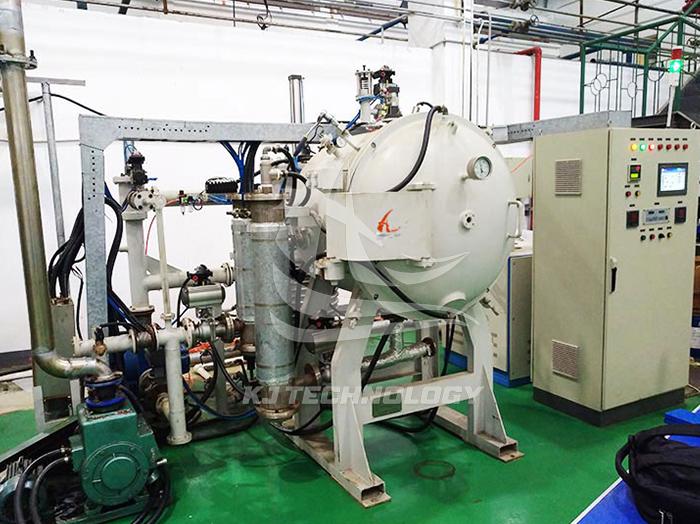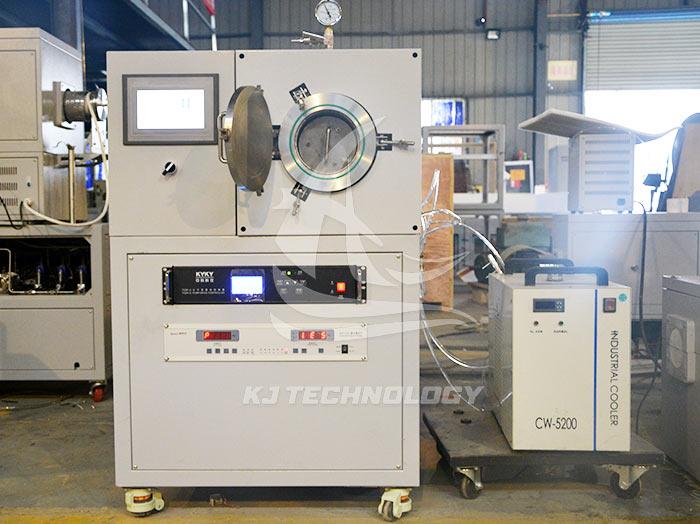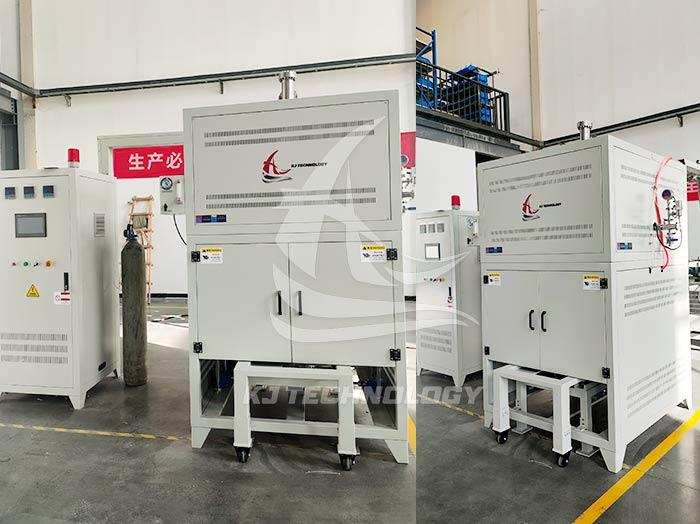How to choose a large industrial vacuum electric furnace?
 11-14-2025 Author: KJ technology
11-14-2025 Author: KJ technology
When choosing a large industrial vacuum electric furnace, a comprehensive evaluation should be conducted from core dimensions such as temperature range, vacuum degree, heating elements, cooling method, control system, equipment structure, brand, and after-sales service. The following is a specific analysis:
1. Clarify process requirements and determine key parameters
temperature range
Select the highest temperature of the equipment based on material characteristics such as metal, ceramic, and semiconductor. For example:
Metal heat treatment (such as annealing and quenching) usually requires 1000 ℃ -1300 ℃;
Ceramic sintering or semiconductor packaging may require temperatures above 1600 ℃;
Special materials (such as tungsten and molybdenum) require high-temperature furnaces above 2000 ℃ for processing.
Attention: Avoid blindly pursuing excessively high temperatures, and consider equipment costs and energy consumption.
Vacuum requirement
The degree of vacuum directly affects the degree of material oxidation. For example:
Conventional metal welding (such as Au Sn eutectic) requires a vacuum degree of 1Pa;
High cleanliness devices (such as military missile modules) require a high vacuum environment of 10 ⁻⁶ Pa.
Key indicator: Vacuum holding capacity, reflecting equipment sealing performance and long-term stability.
2. Core component selection, matching process requirements
Heating element material
Low temperature application (≤ 760 ℃): Stainless steel or nickel chromium alloy is selected for low cost and durability.
High temperature applications (760 ℃ -1650 ℃):
Graphite heating plate: low thermal quality, strong structural integrity, temperature uniformity up to ± 0.5 ℃;
Molybdenum heating element: resistant to high temperatures (1700 ℃), suitable for high-temperature general heat treatment.
Ultra high temperature applications (>1650 ℃): Choose silicon carbide (SiC), tantalum, or tungsten to meet extreme environmental requirements.
cooling method
Air cooling:
Advantages: pollution-free, clean surface of parts, cooling speed affected by air pressure and flow rate (high air pressure and high flow rate result in faster cooling);
Applicable scenarios: Materials with high surface quality requirements, such as precision alloys and optoelectronic components.
Oil cooling:
Disadvantage: Surface micro carburizing problem, which may affect quality;
Applicable scenario: Only used when air cooling cannot meet the cooling speed requirements (such as quenching of certain special metals).
3. Control system and equipment structure to ensure stability and efficiency
Temperature control system
Priority should be given to imported intelligent temperature controllers, which have the following functions:
Automatic control of heating, constant temperature, and cooling;
Process curve storage (can store multiple curves);
Adjustable heating and cooling speed, clock function, PID parameter self calculation;
Power off protection function ensures process continuity.
Vacuum measurement and recording
Vacuum gauge: Select highly reliable imported digital intelligent vacuum gauge or domestically produced high-quality vacuum gauge, matched with high-quality measuring gauge to ensure the accuracy of vacuum degree.
Recorder: Equipped with imported multi-point recorders, it records process curves such as vacuum degree, pressure, temperature, etc., facilitating quality traceability and production management.
Equipment structure and sealing performance
Furnace structure:
Vertical (bell jar lifting type, bottom tray lifting type) or horizontal (single door, front and rear double door);
All adopt water-cooled sandwich wall structure to enhance equipment stability.
Sealing performance:
Special sealing structure and material technology ensure zero degradation of vacuum performance after long-term use;
Avoid the common problem of aging of sealing materials in imported equipment.








